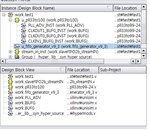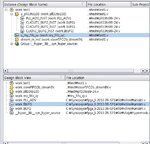coshy
Member level 4
Hi.
I've some problem when i use Xilinx's FIFO instance in the Synplify as below picture.

The u_pll33to100 is also Xilinx's PLL module but it was instanced as well in the Synplify.
I can't understand especially why does only fifo not instanced in Synplify.
How do I supposed to do for solving this problem?
I've some problem when i use Xilinx's FIFO instance in the Synplify as below picture.

The u_pll33to100 is also Xilinx's PLL module but it was instanced as well in the Synplify.
I can't understand especially why does only fifo not instanced in Synplify.
How do I supposed to do for solving this problem?
